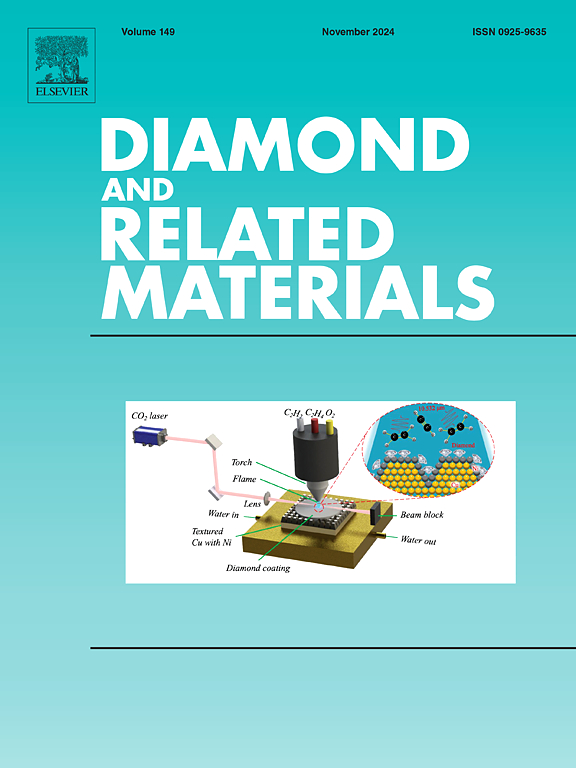废水中各种染料的高增强吸附和光降解:新型复合材料的四层双氧化物,活性炭和磁铁矿
IF 4.3
3区 材料科学
Q2 MATERIALS SCIENCE, COATINGS & FILMS
引用次数: 0
摘要
本研究的重点是制备由Fe3O4、CuAl-LDH或CuAl-LDO和不同AC(从榴莲、花生和橡胶果壳中提取)组成的新型磁性材料作为吸附剂和光催化剂。zeta电位、VSM和BET证实了复合材料的各种特性,显示了两个不同的带电活性位点(−18和+14 mV)、磁性行为(18 - 19 emu/g)、大表面积(319-331 m2/g)以及半导体光催化剂(CuO、CuAl2O4和Fe3O4)。磁性复合材料在易磁选条件下对水中的阴离子色黑T和阳离子孔雀石绿以及废水中的粉芦苇染料均有显著的去除效果。吸附动力学和等温线拟二阶(R2 >;0.994)和Langmuir (R2≥0.999)模型。所有产物的光催化活性取决于它们的吸附效率,以及CuO、CuAl2O4和Fe3O4光催化剂对水中三种染料的去除效果。光催化可重复使用性可以多次循环运行,同时保持高性能的结构和磁性能。本研究表明,所制备的磁性复合材料作为一种潜在的、实用的吸附剂和光催化剂,可用于处理废水中的阴离子和阳离子染料。本文章由计算机程序翻译,如有差异,请以英文原文为准。

Highly enhanced adsorption and photodegradation of various dyes in wastewater: Novel multifunctional composites of CuAl-layered double oxide, activated carbon and magnetite
This study focused on fabricating new magnetic materials as both adsorbent and photocatalyst comprising of Fe3O4 and CuAl-LDH or CuAl-LDO, and different AC (derived from the shells of durian, peanut, and rubber fruit). Various characteristics of composites confirmed by zeta potential, VSM and BET, revealed two different charged-active sites (−18 and +14 mV), magnetic behavior (18–19 emu/g), and large surface area (319–331 m2/g), as well as semiconducting photocatalysts (CuO, CuAl2O4 and Fe3O4). The magnetic composites exhibited the remarkable effectiveness for removing anionic eriochrome black T and cationic malachite green in water, and pink reed-dye in wastewater under easy magnetic separation. The adsorption kinetic and isotherm were best-fitted by the pseudo-second order (R2 > 0.994) and Langmuir (R2 ≥ 0.999) models. The photocatalytic activity of all products was dependent on their adsorption efficiency, and the effects of CuO, CuAl2O4 and Fe3O4 photocatalysts for eliminating three dyes in water. The photocatalytic reusability could run multiple cycles with preserving high performance of structural and magnetic properties. This work illustrated the as-prepared magnetic composites as a potential and practical and adsorbent and photocatalyst for treating both anionic and cationic dyes in wastewater.
求助全文
通过发布文献求助,成功后即可免费获取论文全文。
去求助
来源期刊

Diamond and Related Materials
工程技术-材料科学:综合
CiteScore
6.00
自引率
14.60%
发文量
702
审稿时长
2.1 months
期刊介绍:
DRM is a leading international journal that publishes new fundamental and applied research on all forms of diamond, the integration of diamond with other advanced materials and development of technologies exploiting diamond. The synthesis, characterization and processing of single crystal diamond, polycrystalline films, nanodiamond powders and heterostructures with other advanced materials are encouraged topics for technical and review articles. In addition to diamond, the journal publishes manuscripts on the synthesis, characterization and application of other related materials including diamond-like carbons, carbon nanotubes, graphene, and boron and carbon nitrides. Articles are sought on the chemical functionalization of diamond and related materials as well as their use in electrochemistry, energy storage and conversion, chemical and biological sensing, imaging, thermal management, photonic and quantum applications, electron emission and electronic devices.
The International Conference on Diamond and Carbon Materials has evolved into the largest and most well attended forum in the field of diamond, providing a forum to showcase the latest results in the science and technology of diamond and other carbon materials such as carbon nanotubes, graphene, and diamond-like carbon. Run annually in association with Diamond and Related Materials the conference provides junior and established researchers the opportunity to exchange the latest results ranging from fundamental physical and chemical concepts to applied research focusing on the next generation carbon-based devices.
 求助内容:
求助内容: 应助结果提醒方式:
应助结果提醒方式:


